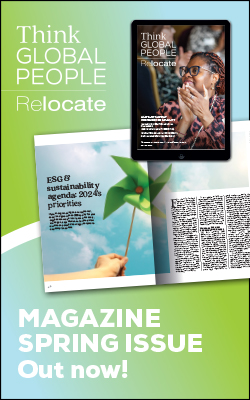New report 'dispels myth' of motherhood’s impact on careers
A new study from the Boston Consulting Group (BCG) finds the role of corporate culture outweighs that of motherhood in determining female representation at senior levels.

Culture link to gender balance
Over time, in companies that lag on gender diversity, both women’s and men’s ambition tended to decline, but women’s ambition eroded faster than men’s.In these companies where employees report the least progress on gender diversity, the ambition gap between women and men age 30 to 40, often a key period in a career, was 17 percentage points: 66 per cent of women sought promotion, compared with 83 per cent of men.Related reading:
Gender equality 4.0: From binary to balanced approaches
Gender pay gap at senior levels due to ‘poor signalling’
CBI urges swifter progress on more inclusive workplaces
Yet, the study found there was virtually no ambition gap between women and men in this age group who work at companies where employees feel gender diversity is improving. Here, 85 per cent of women sought promotion, compared with 87 per cent of men.“Both genders are equally ambitious and equally rational," said Matt Krentz, a BCG senior partner and coauthor of the report. "If leadership looks possible, employees want to be leaders. If it doesn’t, they will lower their ambition."“Ambition is not a fixed trait; it is an attribute that can be nurtured or damaged over time through the daily interactions and opportunities employees experience at work.”
Four steps to closing the gap
To help foster the right culture, the report outlines four key steps companies can take to reconnect cultures to diversity goals and close the leadership diversity gap.- Build a gender-diverse leadership team: These teams should have the right role models in place to demonstrate that leadership is a realistic prospect for women as well as men. When hiring for these roles, take steps to combat unconscious bias by asking for blind and gender-balanced lists of candidates.
- Change the informal context: An employee’s work experience isn’t defined only by the work they do; it is shaped by many small informal interactions with coworkers and leaders during the course of the day. Be mindful not to perpetuate stereotypes with trips to the cigar bar after work, for example.
- Make structural changes and relentlessly promote them: Sixty per cent of women and men alike cite challenges in meeting increased job responsibilities while managing outside commitments as a reason they are reluctant to advance. Offer more flexible work options for everyone at the company, including senior leaders.
- Track progress and involve everybody: CEOs and HR teams should be transparent, track progress, and link diversity efforts to outcomes. For example, companies might tie executive compensation or manager promotions to the level of gender diversity in their businesses or teams.
Focus on inclusive recruitment and employee engagement
“The good news is that addressing this ‘ambition gap’ is entirely within an organisation’s control,” said Katie Abouzahr, a health-care principal at BCG and coauthor of the report. “By creating the right culture, companies can foster women’s ambition and tap into the wider pool of talent needed to win in the future.”Also responding to the Boston Consulting Group’s findings, Kate Headley, director at the Clear Company, commented; “These findings support what the Clear Company has long understood to be the crux of the issue of gender inequality – company culture is pivotal in increasing female representation across an organisation in the long-term.“There is no use focusing on initiatives to get women through the doors if the culture is not conducive to the subsequent retention and promotion of this talent. In fact, the attrition of high-potential females drafted in to improve representation can actually be more damaging to gender diversity levels long-term.“Firms should focus on ensuring that recruitment processes are truly inclusive and that existing employees are thoroughly engaged, if they are to organically strengthen female talent pipelines in a sustainable way.”Follow the links for more HR and talent management news and features.
Access hundreds of global services and suppliers in our Online Directory
Get access to our free Global Mobility Toolkit

©2024 Re:locate magazine, published by Profile Locations, Spray Hill, Hastings Road, Lamberhurst, Kent TN3 8JB. All rights reserved. This publication (or any part thereof) may not be reproduced in any form without the prior written permission of Profile Locations. Profile Locations accepts no liability for the accuracy of the contents or any opinions expressed herein.




























